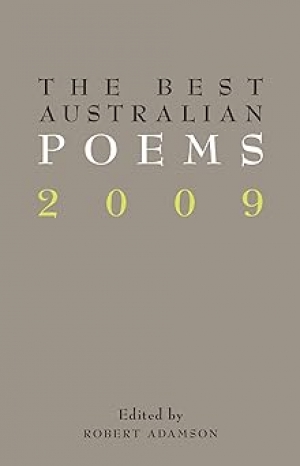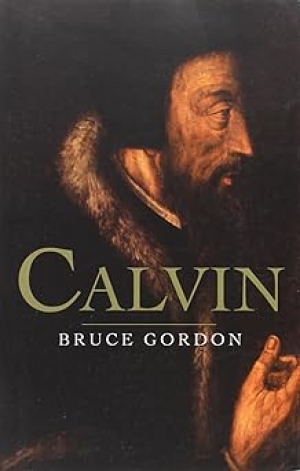Archive
Fuel is Andrew Sant’s eleventh poetry collection. His previous volume was Speed & Other Liberties (2008), which included some of the new poems from Tremors: New & Selected Poems (2004), along with additional work. The epigraph to Speed & Other Liberties is Marc Bloch’s statement that ‘Contemporary civilisation differs in one particularly distinctive feature from those which preceded it: speed’. So, the titles of Sant’s last two volumes imply movement, power, freedom and forward thrust. Certainly, some of the poems in Fuel move at least as fluidly as the often fast-paced poems in Speed, impelled by a rapid accumulation of ideas and associations.
... (read more)Gregory Kratzmann reviews 'The Best Australian Poems 2009' edited by Robert Adamson
Reviewing Martin Langford’s Harbour City Poems in the November 2009 issue of ABR, I remarked on the absence from the anthology of new young voices. This is a criticism that cannot be made of Robert Adamson’s selection for this year’s Black Inc. Best Australian Poems. Adamson, distinguished poet and Hawkesbury fisherman, has cast a very wide net, departing from the practice among recent editors of this fine series by including unpublished poems; some of these are from established poets, but several are from new and usually young writers whose work bears witness, in the editor’s words, to ‘the power of the incoming tide’. Thankfully, the days have gone when blokes who wrote poems selected their mates’ work when they came to edit anthologies. Adamson didn’t set out to redress any perceived gender imbalances, but more than half of his selection consists of work written by women; this has been ‘the year of the women poets’, as he says.
... (read more)Mark Gomes reviews 'Billy Thorpe’s Time On Earth' by Jason Walker
Billy Thorpe’s story is the perennial one of an Australian artist dissatisfied with domestic success. In this account of the late pop star’s career, Jason Walker bypasses discussion of Thorpe’s music per se to present him as ‘truly Australian … a battler, a doer [and] a self-promoter’ who lusted for international recognition. While it vividly recounts Thorpe’s life (1946–2007), including enough sex, drugs and equipment fetishism to delight boyish music fans, the real strength of Billy Thorpe’s Time on Earth is its profile of Thorpe’s careerist, provincial psyche and the lengths he went to in search of adoration.
... (read more)Ann Standish reviews 'Australians: Origins to Eureka, Volume 1' by Thomas Keneally
A number of questions sprang to mind when I heard that Thomas Keneally was writing a three-volume history of Australia from its origins to the present. The first was to wonder how he would fit it into his crowded schedule. Clearly, though, this is not a problem. Keneally has just published another novel. More intriguing was the question as to what Keneally could add to the subject. After all, Australia is not lacking in colonial histories, many written by historians who are skilled writers. As Keneally is primarily a novelist, albeit one with a serious interest in our history and with several non-fiction studies under his belt, would the work reflect the conventions of historical fiction?
... (read more)Stephen Mansfield reviews 'Stolen: A Letter To My Captor' by Lucy Christopher and 'Mama’s Song' by Ben Beaton
A certain sub-genre of Young Adult fiction thrives on the psychology of duress – on the useful friction yielded by placing a young heroine in a near-impossible situation and asking the reader: ‘What would you do? How would you cope?’ Two recently released, formidable début novels have utilised this formula, with some impressive results.
... (read more)Bruce Mansfield reviews 'Calvin' by Bruce Gordon and 'Political Grace: The revolutionary theology Of John Calvin' by Roland Boer
John Calvin has not had a good press among the general or even the educated public. Marilynne Robinson caricatures the popular view: ‘an eighteenth-century Scotsman, a prude and obscurantist with a buckle on his hat, possibly a burner of witches, certainly the very spirit of capitalism.’ Even Les Murray, who of course knows a lot of ‘religious stuff’, in a recent poem (‘Visiting Geneva’), addresses ‘John Calvin, unforgiver / in your Taliban hat’. The reasons are, no doubt, complex. Calvin has mistakenly been given sole responsibility for the fate of Michael Servetus. His relationship with Geneva has been misunderstood. Predestination has been seen as the centrepiece of his theological system, when it is questionable whether one can speak of a ‘system’ at all.
... (read more)John Byron reviews 'Film Adaptation and its Discontents: From Gone With The Wind to The Passion of The Christ' by Thomas Leitch
If the past is a foreign country, Hollywood is another planet: they sure do things differently there. Just how differently is the predictable and tedious obsession of far too much adaptation scholarship, fixated on the degree of fidelity of a film to its adapted literary Urtext. This practice, boring and unimaginative, diverts the attention from what art can tell us about ourselves to what it can tell us about the colour of the breeches worn in the novel by that odd fellow in the twelfth chapter. Thomas Leitch, for one, is sick of it, and he has set out to shake up film scholarship and inject new life into the study of adaptation in this wide-ranging and acutely observed treatment.
... (read more)Stuart Macintyre reviews 'Historical Encyclopedia of Western Australia' edited by Jenny Gregory and Jan Gothard
In the closing years of the twentieth century, historians combined to produce large reference volumes of national history. Some were stimulated by anniversaries, notably the dictionary, atlas, gazetteer and chronology, guide to sources and compilation of statistics that were published by Fairfax, Syme and Weldon for the Bicentenary. Some were initiated by publishers, such as the Companion to Australian History (1998) that Graeme Davison, John Hirst, and I edited for Oxford University Press.
... (read more)Patrick McCaughey reviews 'I Blame Duchamp: My Life’s adventures in art' by Edmund Capon
Over the past three decades, Edmund Capon has transformed the Art Gallery of New South Wales. Before he arrived, you could have swapped the contents of the Sydney gallery with Ballarat’s and nobody would have noticed the difference. How a city of that size, wealth and international ambition could have wound up with such a provincial collection puzzled the mind. No more. Capon has thrown out new wings, created a distinguished Asian collection virtually ex nihilo, attracted the generous benefaction of some remarkable old master paintings from James Fairfax, and acquired major twentieth-century and contemporary works. As importantly, he has made the AGNSW the liveliest of the state galleries. Even a wet Tuesday morning sees the central court thronged. Often Capon installs a medley of works there which would look inchoate in most other galleries but which emerge as resounding and triumphant. I once saw the big Kirchner Three bathers hung with the august Max Beckmann’s Mother and daughter and Picasso’s crackling Seated nude from the mid 1950s. Collectively, they gave off the whack and weight of modernity more excitingly than any other display in Australia.
... (read more)Why do you write?
For the language, for the ideas, for the pleasures of the imagination, for the unorthodox hours, for the solitude.
Are you a vivid dreamer?
To dream you need to sleep, and sleep, like sport, is not a skill I have ...










